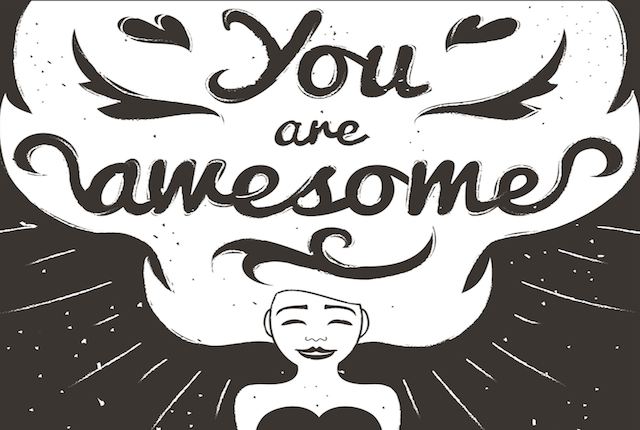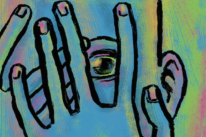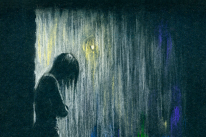
“Sometimes I panic; what if nobody finds out who I am?” ~Billy Joel
At home, you want to go out and be social. When you’re out being social, you want to go home and be alone.
At home you feel free, joyful, and ambitious. You’re smart, funny and insightful. Out in the real world, you’re quiet, non-confrontational, and you struggle to connect with others.
That person you remember from being home alone is a thousand miles away, and you feel like a shell of yourself.
Does this sound like you? Why does this happen? Who are you really? How will anyone ever know how you feel on the inside?
First, some good news: All of those wonderful thoughts you have about yourself? They’re true. How smart, funny, and attractive you are? Yes, yes, and yes. I’m not just blowing smoke. We all are amazing at our core, at our true essence.
What about the negative thoughts? Are those true, too? Here’s more good news: No, those are misconceptions. Simply misunderstandings and wrong interpretations of life situations.
You know, and I know, that the real you—you at your core—is awesome. If you feel compelled to read on, then this is ringing true for you. Good.
For years in my teens and twenties, I felt this wonderful person inside me at all times. I was most able to connect with this person when I was alone. This made me an introvert, I suppose. But put me out with people or in a crowd, and I lost that person.
He was nowhere to be found—hidden behind a plethora of uneasy thoughts and the desire to escape and be alone again.
At parties, I was the guy who found a quiet spot and stayed there. Unless, however, I was drunk, which was the only way I let my guard down enough to let people see who I really was.
And that’s exactly the key here—letting people see who you really are.
As kids, we all did this quite easily. We had not yet learned to censor ourselves or hide our true feelings. We had not yet learned to fear for our well-being in social situations and cope with that by putting on masks or pretending to be things we’re not.
I specifically remember as a teenager, that going into tenth grade, I made the firm decision to be someone I was not. I pretended to be more social, more outgoing, and more confident, but it was all an act.
I felt like a fraud. It wasn’t based on true feelings of confidence and the desire to connect with others. It was based on not wanting to be socially ostracized or bullied. I did my best to imitate the behavior of others, and it was exhausting. I preferred to be alone.
Due to the positive feedback I received from my peers, however, this new effort became an unconscious habit. I spent years and years automatically hiding who I really was, and giving people only a shell of what I am or how I think.
Shockingly, many years later, I realized that nobody really knew me. And looking back, whose fault was that? Mine. I took my short-term survival tactic of not being myself and made it a lifestyle. It was a Band-Aid that I adopted as a permanent part of my skin.
So how do we change this now? It’s a pattern so ingrained in ourselves that many of us aren’t even aware we do this. It’s just “normal.”
So the first step is to become aware. Are you the same person out and about that you are at home? Do you want to be? Great, we’ve gotten that far.
Next, what’s preventing that? The awesome person we feel like inside—what’s preventing us from letting others see that? The answer is our fears.
What are fears? At their core, just thoughts. For example, social ostracism. It feels unsafe to be a social outcast, which is why many people seek to avoid it.
So what if you change your thought about this? What if you began to think, “It’s okay and it’s safe not to fit in with certain groups”? When you change your thought about this, your fear will dissipate. Sometimes slowly, sometimes quickly.
Once you reach a certain level of awareness, further thoughts and realizations will dawn on you as never before.
You’ll realize that it’s emotionally painful to subject yourself to the company of people who won’t accept you for who you are. Shortly after that, you’ll come to understand that the awareness and pain are really first steps toward finding those who will accept and appreciate you.
And it’s fine that some people won’t accept or appreciate you. That’s just life; nobody is perfect. It’s best to let that go and move on to better things.
These new understandings will have a momentum all their own, and each one will transform your mind, piece by piece, to a new place and a new feeling.
If you’re the kind of person that can change their mind wholeheartedly on a dime, you can move forward quickly.
If you’re the kind of person who has to stick their toe in the pool first to gauge the temperature, then their knee, then their leg, it’ll take some time and trial and error for you to commit to changes in thought.
But once you’ve changed your thought, once you’ve removed your fear about letting others get to know the real you, you’ve opened doors and windows to who you really are—that wonderful, witty, loveable person you’ve always known yourself to be.
In time, the gap you feel between when you are alone versus when you are out and about with people will shrink. You’ll even consider thoughts like “maybe I’m not really an introvert,” as your desire to let people connect with the real you grows.
As a bonus, you’ll make stronger, deeper connections with people, because the connections will be with the real you, not a shallow exterior you’ve held onto for so long.
Many of your current relationships will change for the better, and you’ll begin other relationships anew. These bonds, and the newfound ability to express the real you and let others see it will increase your enjoyment of life and positively affect your experience of it. Your life will be forever better.
You are awesome image via Shutterstock
About Louis Savalli
Louis Savalli is a long-time enthusiast of all things related to personal growth and spirituality. He currently resides in upstate NY with his wife and two children. Read more and connect with Louis at www.savalli.me.













 Though I run this site, it is not mine. It's ours. It's not about me. It's about us. Your stories and your wisdom are just as meaningful as mine.
Though I run this site, it is not mine. It's ours. It's not about me. It's about us. Your stories and your wisdom are just as meaningful as mine. 